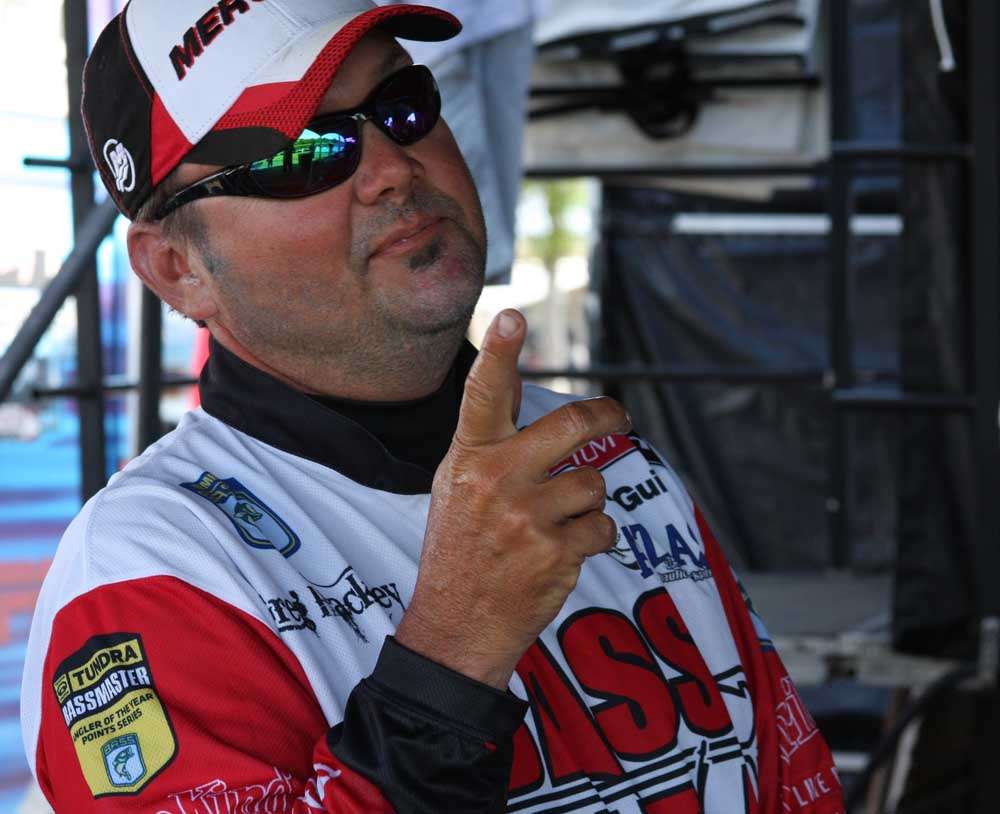
It’s rare that you’ll see Elite Series pro Greg Hackney without a jig rod lying on his boat deck.
There may not be a more devout and successful jig fisherman on the Elite Series tour.
And while flipping/pitching jigs is his favorite technique, you may see him casting, swimming or even finessing a jig on any given day.
“It’s hard to fish successfully anywhere without a jig tied on,” said Hackney. “It is one of the most versatile and best big bass baits you can use.”
Hackney offers these three tips to becoming an expert jig angler:
#1 – Build confidence
Most recreational anglers have tried fishing a jig, but many lose confidence when they aren’t biting.
“You’ve got to spend some time with a jig to learn its nuances and learn what a jig bite feels like,” Hackney explained. “Bass rarely slam a jig; sometimes it’s just a ‘pressure’ bite, where you feel a little weight on the line but nothing convincing. Other times it might be a slight ‘tick.’ Get a feel for that, your confidence will soar.”
There are two ways to build confidence quickly. The best is to go to a farm pond or a lake full of bass, regardless of the size of fish, and practice, practice, practice.
“If you don’t have a place like that, go to your favorite lake and carry one rod —for jigs,” he offered. “That’s the very best way to get familiar with jig fishing and resist using other techniques.”
#2 – Gear up properly
Don’t rush to buy a flipping stick before you gain confidence in jig fishing. It’s better to learn with a rod that you’re comfortable fishing.
“If your favorite rod is a lighter action, get a finesse jig or a 1/4-ounce jig that matches well with it,” he advised. “In fact, I recommend anglers start with a smaller profile jig; it gets you more bites and confidence will build quicker.”
As your confidence grows, you can move up in size.
Hackney suggests a minimum of 7 feet but says 7-4 and 7-6 rods are best. The longer rod picks up line quicker and helps you power fish away from cover.
For casting jigs into deeper water, he likes a 7-6 with a lighter tip. Again, the longer rod improves hook sets on fish farther away and in deeper water.
“I carry about 5 or 6 different jig rods for the different techniques I use,” he explained. “The thing to remember is that when you drop down in line size, you should be using jigs with lighter wire hooks and therefore you need a lighter action rod.”
Hackney is an advocate of braided line for most of his jig fishing, unless he’s casting the jig in clear water.
“I don’t worry about fish seeing the braid when I’m dropping a jig into heavy cover because the first thing they see is the jig, not the line,” he insisted. “But if you’re dragging a jig in clear water, that’s a different scenario.”
#3 – Match your trailer to conditions
In early spring or cold water situations, Hackney tips his jig with a Strike King KVD Chunk that has a big profile, but less action.
“A more subtle swimming jig is better in cold water,” he described.
As the water heats into the upper 60s, he opts for a Rage Craw with active, vibrating legs. The Rage Craw is also his first choice for swimming a jig.
“It’s also important to remember that different actions and sizes of trailers affect the rate of fall of a jig,” he explained. “A half-ounce jig tipped with an active, bulky trailer will fall slower than one with a slender body and legs that vibrate less.”
However, a jig tipped with a Rage Menace is more slender and, while its legs wiggle on the fall, it will cause a jig to plummet faster.
“There are times when rate of fall of a jig can be critical, so don’t be afraid to experiment with trailers,” he concluded.





